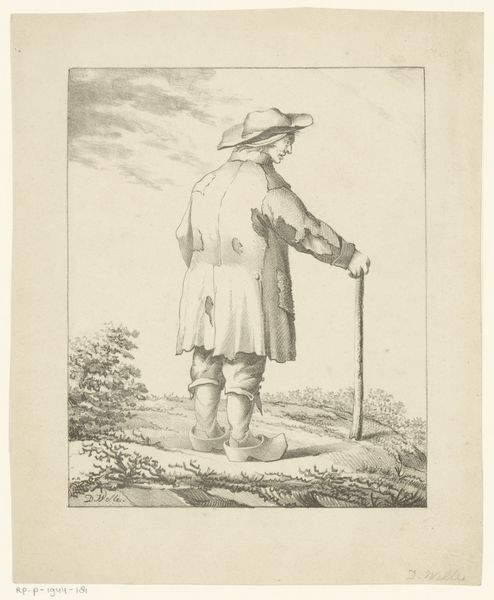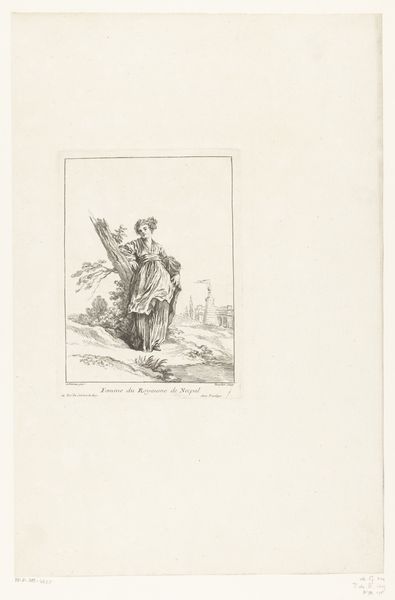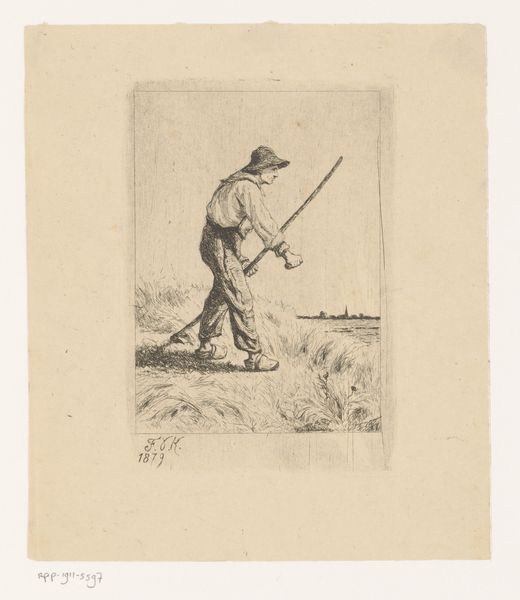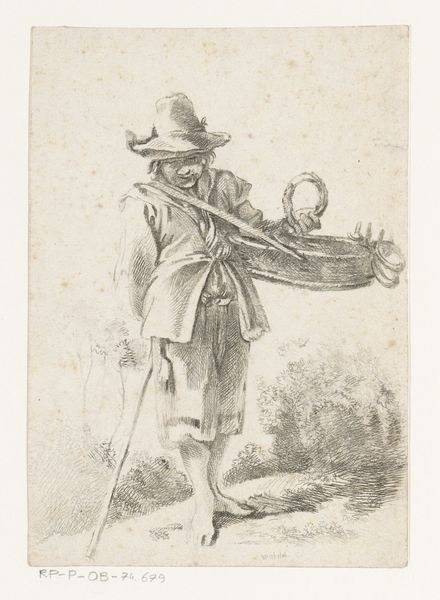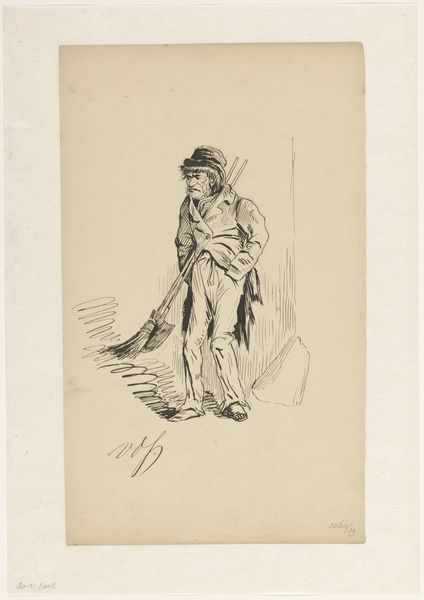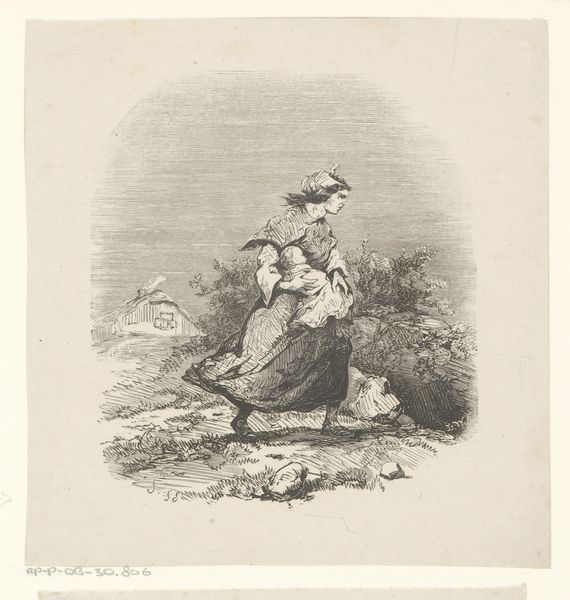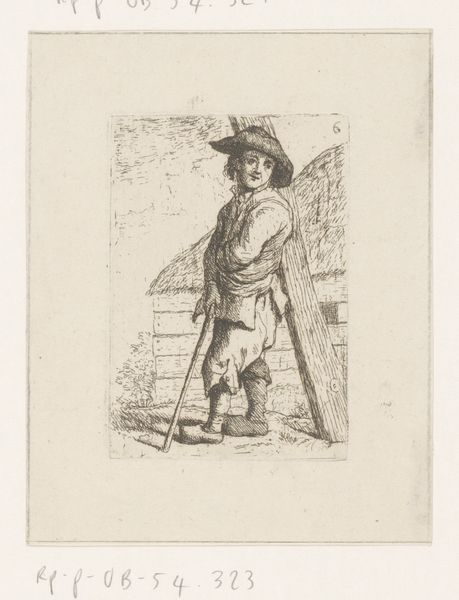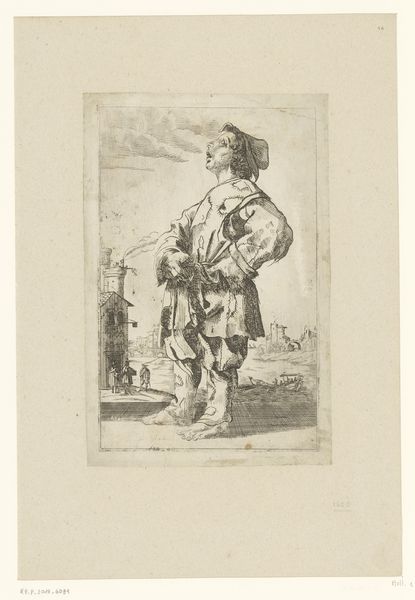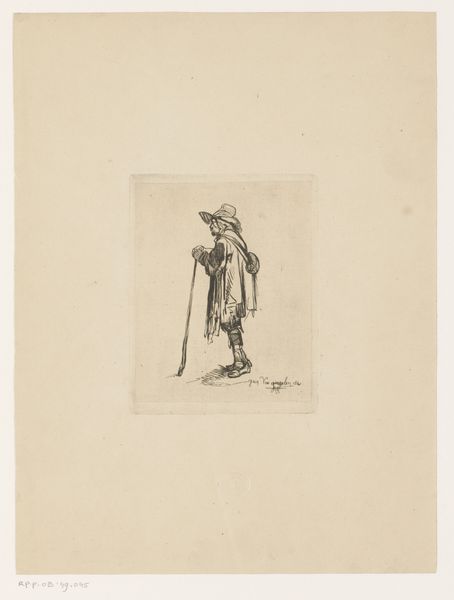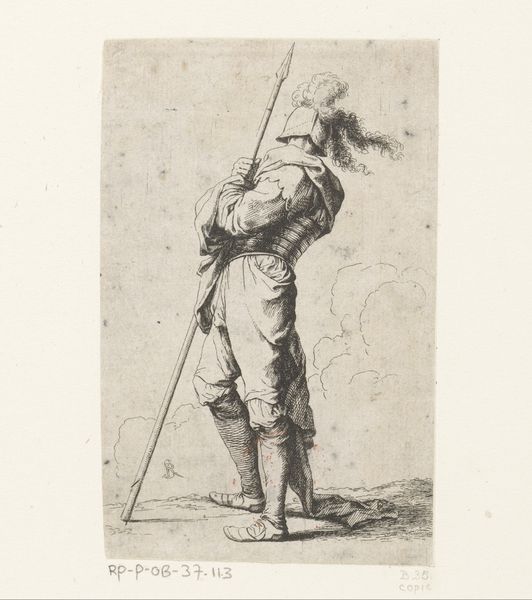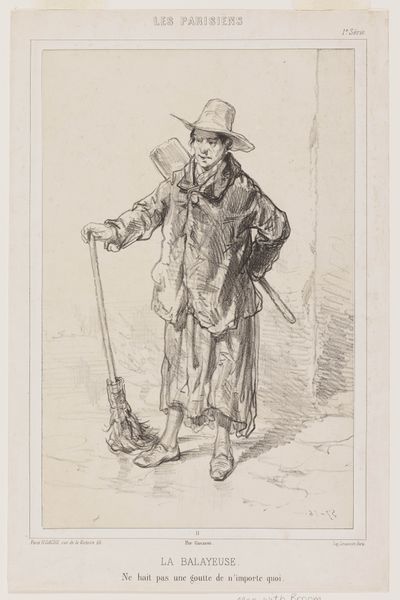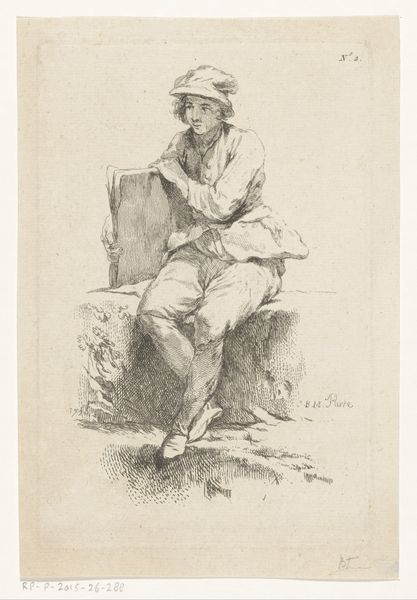
drawing, print, etching, paper, ink
#
drawing
# print
#
etching
#
landscape
#
paper
#
ink
#
genre-painting
Dimensions: 191 × 120 mm (image); 200 × 129 mm (plate); 319 × 226 mm (sheet)
Copyright: Public Domain
Editor: This is Jean-François Millet’s "The Spinner," created around 1868 or 69. It's an etching printed with ink on paper. There's something serene, almost meditative, about this image of a woman working in a field. I'm curious, what draws your eye when you look at it? Curator: You know, it’s funny, it always strikes me how Millet manages to capture the monumentality of the everyday. Here's this woman, seemingly alone, but utterly connected to the land, to a tradition. That swirling yarn in her hand—it feels almost like she's spinning fate itself. Does that resonate with you at all, that sense of… destiny interwoven with labor? Editor: I hadn't really thought about the “destiny” aspect, but now that you mention it, the spinner really does evoke that! I was more focused on her solitude. The way she’s set apart from the sheep in the background, for example. Curator: Solitude, yes, but not isolation, perhaps. Look at the landscape; it's not romanticized, it’s a real working environment. It mirrors the woman’s existence: simple, grounded, but not without its own understated beauty. Consider that he lived among those who lived on the land. Editor: So you see this work as almost an homage to that rural lifestyle? Curator: Perhaps “homage” is too strong a word. Maybe it’s more of a meditation, a rumination on the rhythms of life, the quiet dignity of labor. Millet wasn’t trying to create some idyllic fantasy. He was showing us what *is*, and inviting us to see the beauty within it. The landscape holds a great importance, especially with her goats! Editor: This really enriches my appreciation of this piece. I walked in, and now I can now see those subtle meanings in it! Curator: And now, you can appreciate Millet on a much larger scale!
Comments
No comments
Be the first to comment and join the conversation on the ultimate creative platform.
